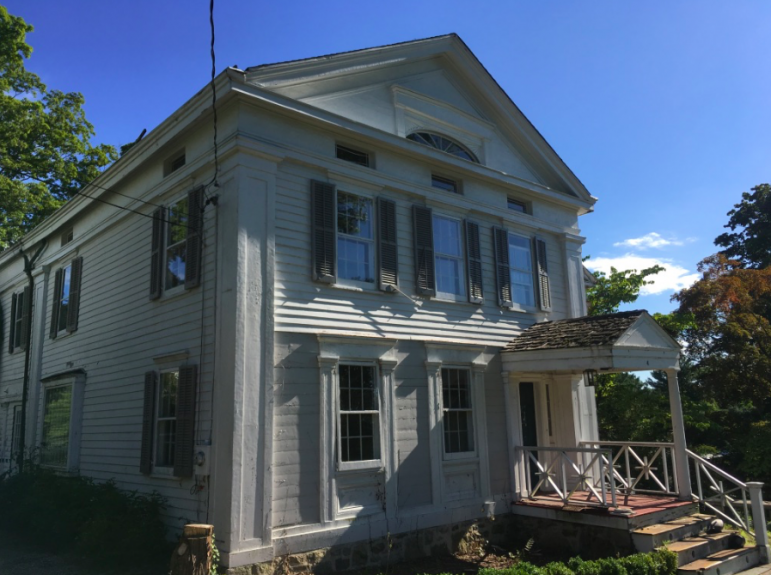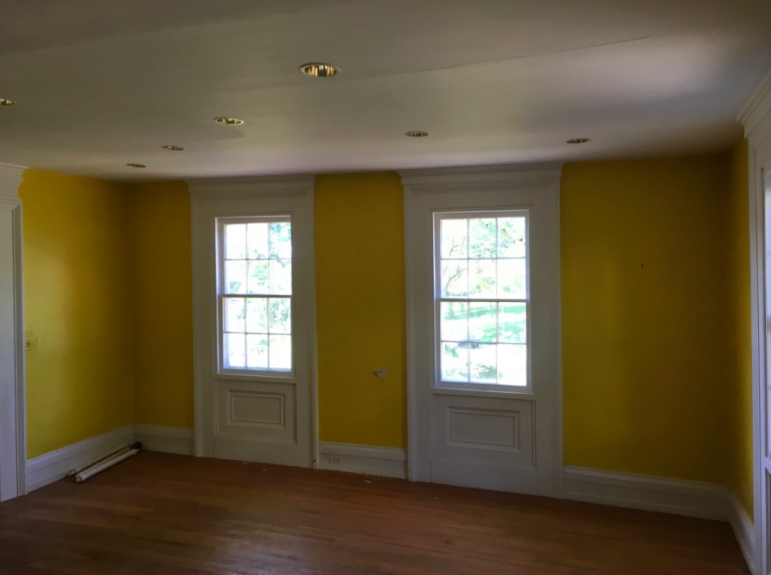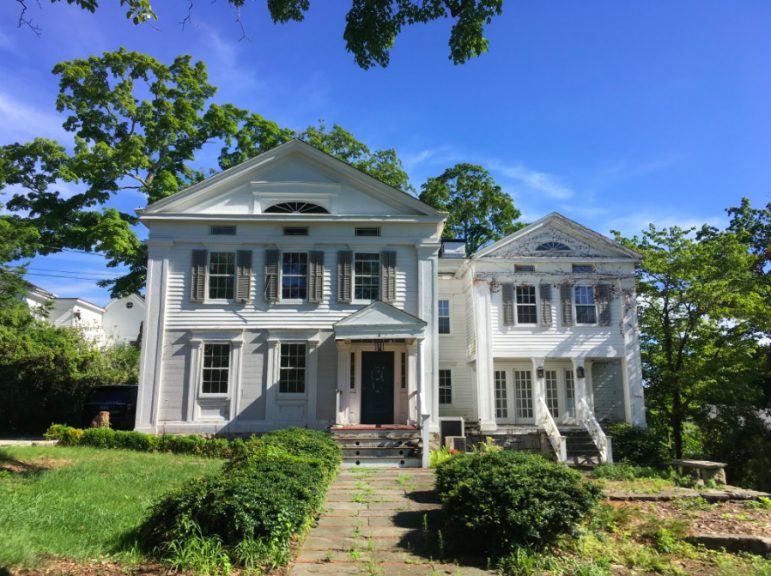The new owner of the antique Greek Revival-style home at 4 Main St. is in talks now with the town-appointed body that oversees New Canaan’s Historic District.
A neighborhood immediately around God’s Acre that includes 21 sites, the area is overseen by the Historic District Commission, whose sign-off is needed for exterior alterations to the buildings there.
Arnold Karp of Karp Associates told NewCanaanite.com during a recent tour of the home (see photos above) that his plan is to raze the long-neglected ca. 1780-built house and rebuild its iconic street-facing facade.
“There is nothing historical left because it’s been renovated so many times,” Karp said. “So our concept is to keep the facade which is what is iconic about this building, just rebuild it [the facade], make it look like it [the house] has been here forever, and then build a home with a current floor plan behind it. A single family home. Get rid of the office use that this had and make it a single family home.”
A look inside the house reveals a mishmash of new and old construction, including one major expansion project halted before it was finished, sloping floors, unusable areas, awkward floor planning, water damage and odd embellishments in the walls, fireplaces and moldings.
Karp bought the house and .43-acre lot it sits on for $810,000 in June, then transferred its ownership to a LLC controlled by his family.
His plan for the “Joseph Scofield House,” as it’s known, would see its overall footprint reduced significantly. He plans to knock down the newest additions out the back—designed to serve as office space for a prior owner—and create a garden and back yard there. (The lone historical note on Joseph Scofield in Mary Louise King’s “Portrait of New Canaan” is that, four years into the Panic of 1837 financial crisis fallout, he filed for bankruptcy after opening a general store near the top of Locust Avenue.)
“I bought it because I think the front of this is iconic and should remain in God’s Acre,” he said. “What we have come to learn is that part of this is not old—the right-hand side—but the thought is to build something to make it look just like it is sitting today, with a livable house behind it.”
That will mean 9-foot floors on the first and second floors.
“The concept is to make it look like it always did,” he said. “That’s why we bought this, why we bought the Red Cross building. I think God’s Acre is something that we should save for New Canaan.
Prior to its sale to Karp, the house had been in foreclosure proceedings for years and its neglect served as a source of great concern for the Historic District Commission.


